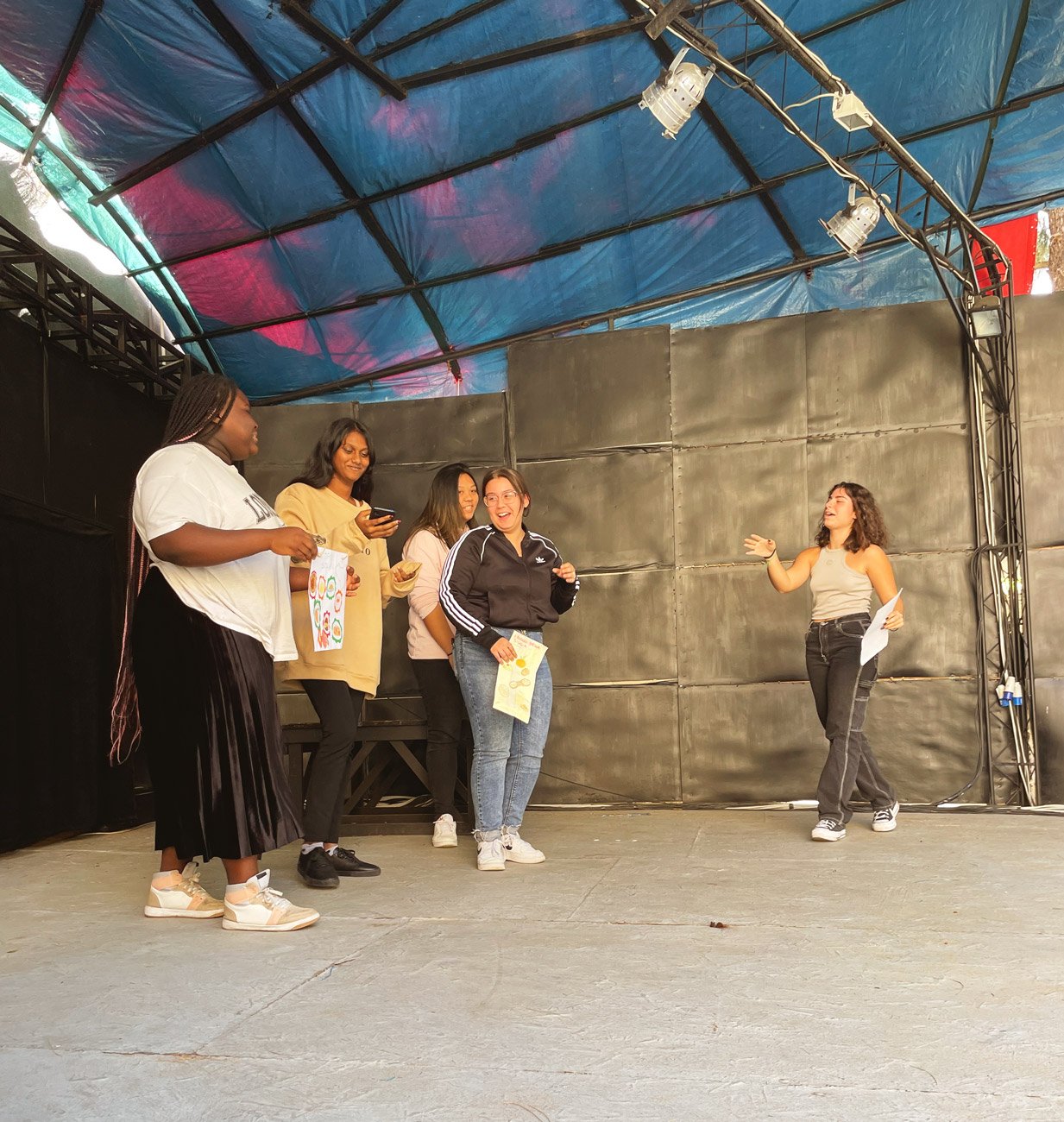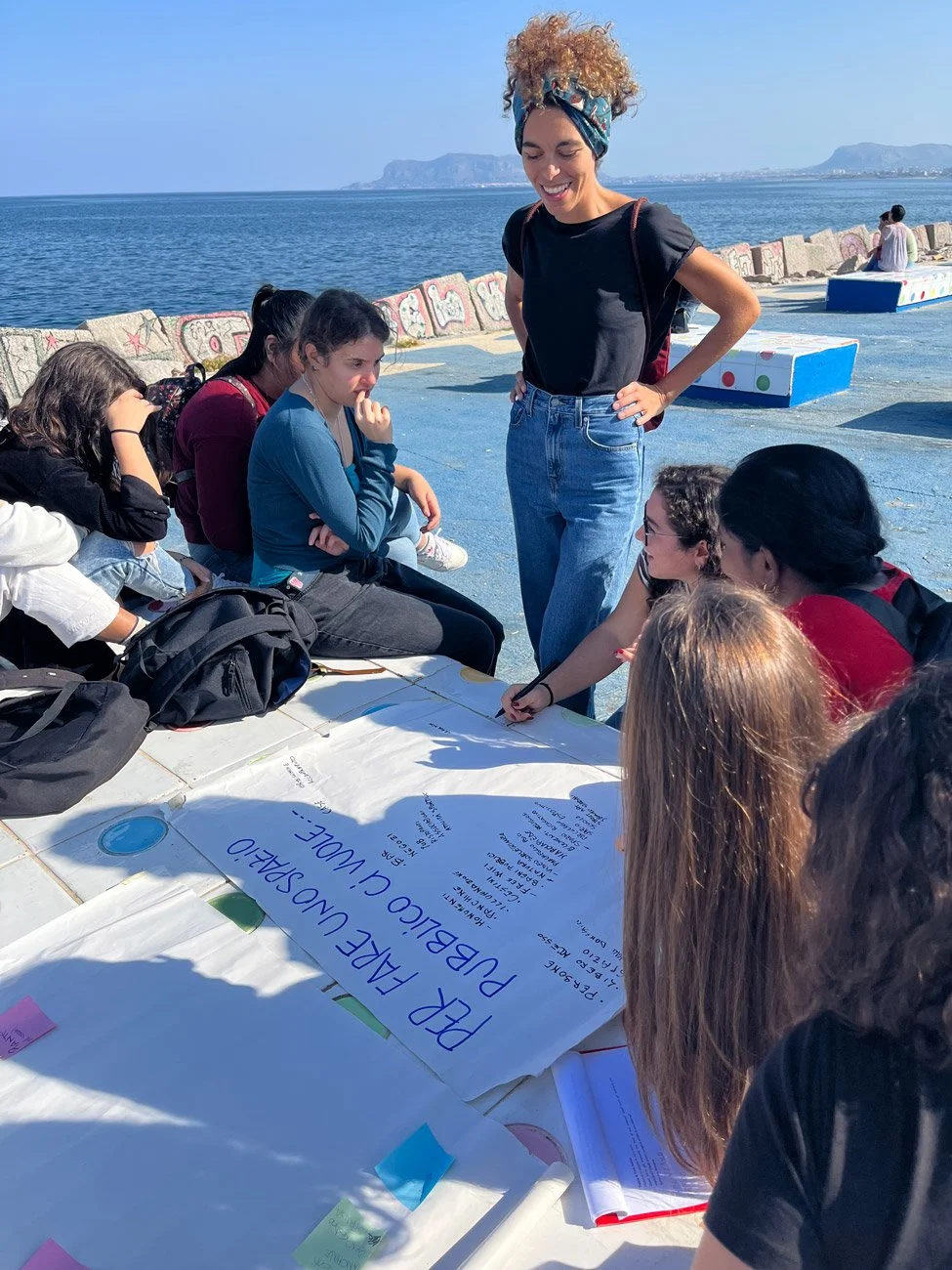Urban Mapping Of Capo In Palermo
UrbEX Labs in Palermo have been realised during six meetings between October and November 2022. The Labs have been designed as a learning opportunity for a group of students from the high school Ferrara in Palermo and recognised as formative credits. Main focus of the labs has been the exploration and interaction of the young participants with the urban space using Capo neighbourhood as a learning field. The labs have been leaded by the youth workers trained during the UrbEX training who proposed different perspectives and methodologies. Almost every meeting started with a presentation to introduce the topic of the day and followed with outdoor activities and exercises. Particular attention has been given to explain with example terms as maps, urban exploration, storytelling, public space, urban planning and thematic itineraries. The labs offered to a group of young people the opportunity to interact in a different way, to learn while having fun and to discover how many things we can observe and analyse in our surroundings.
Intro and Urban Mapping
We started our labs with the activity “My Map My world” in order to start to know better the group of participants and introduce them to the non formal methodology of the UrbEX Labs. The first lab continue with a presentation about Map and urban mapping and after that divided in groups they went out in the neighbourhood for the Secret Mission exercise. Every group has a different mission that invite them to put attention to one specific aspect of the neighbourhood Capo: Capo as a piece of art; find the green in Capo; what surprise you most of the neighbourhood; the sense stimulated while exploring Capo. After the first exploration each group showed to the others their discoveries about the neighbourhood.
CAPO STORYTELLING
The second Lab has been focused on the topic of storytelling and on how to create a story through the interaction with Capo neighbourhood and its people. The day started with a presentation to explain what is storytelling, followed by an outdoor exercise. Using the exercise “MeetMySurroundings”, presented by Nomadways during the UrbEX training, we assigned to each group different lenses to interact with the neighbourhood (food; art; environment; religion) and a selection of item cards. Once back from outside each group prepared a story about Capo neighbourhood by creating a route, proposing a song or performing a scene.
FUORI CAPO
On our third lab we went out of Capo and moved to the Kalsa neighbourhood. Focus of the meeting has been the analysis of what is needed to make a public space by exploring 4 different squares. We started with a brainstorming to introduce the concept of public space, the differences among private and public and the necessary and optional elements to make a public space. Divided in groups the youngsters observed 4 different public places, analysing the elements present and missed and the actions realised in the spaces. The lab ended with a final discussion in the water front of Palermo to give to the participants a complete different perspective of what a public space could be.
PLANNING FOR REAL
After analysing different public spaces during the fourth lab we invite the young participants to redesign an abandoned area of the Capo neighborhood: Cortile Mangano. We started by introducing them the concept of urban planning and showed them different examples of urban regeneration in different european cities. After the presentation we went in the area chosen for the exercise. We gave them a planimetry of the area and divided in groups they started to analysed the elements missed and what they could plan differently. After the first analysis they started to plan the area using different materials. At the end of the day each group presented to the others their regeneration projects for the area.
THEMATIC ITINERARIES AND URBAN GAMES
The last two meetings of our Labs have been dedicated to prepare thematic itineraries to discover the Capo neighbourhood that will be used during the international youth exchange. We started by explaining what is an itinerary, the different types (physical, digital, passive or active) and we showed different example of itineraries that use digital apps, thematic walks and urban games. Then divided in groups they started to design their itineraries according to the four topics: art and culture; food and tourism; religion and multiculturality; green and decay. Each group had time to explore the area, collect materials (pictures, video, etc), to select the main points and start to create itineraries as games. During the last meeting we tried the itineraries and gave them feedback. The participants will continue to work during the school time on the task assigned and finalise the games.
Are you interested in our learning outcomes and materials? You are always welcome to get in touch or subscribe to our newsletter to get news about publications and events in your inbox.




